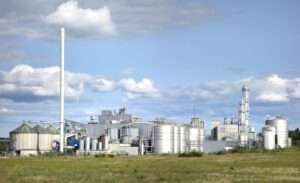Biofuel growth driven by increasing use in transport in China and emerging economies, new report reveals

These scenarios, as highlighted in the 107-page report, are not predictions of what is likely to happen or what bp would like to happen, but rather they explore the possible implications of different judgements and assumptions concerning the nature of the energy transition.
The scenarios in the report are based on existing technologies and do not consider the possible impact of entirely new or unknown technologies.
The demand for biofuels, the report says, expands rapidly over the first half of the outlook, increasing by around 60% in current trajectory and almost tripling in net-zero.
This growth is driven by increasing use in transport in China and emerging economies as well as in the EU and US, supported by government policies to boost biofuel use.
Modern bioenergy use increases by around two-thirds by 2050 in current trajectory and more than doubles in net-zero to a little over 70 EJ by 2050.
This expansion is achieved without any increase in land use, with most of the modern bioenergy sourced regionally from residues and wastes, according to the new report.
In the net-zero scenario, the increase in the total use of bioenergy is partially offset by the declining role of traditional biomass, which is currently predominantly used for cooking and heating in Africa and some parts of Asia.
The use of traditional biomass is almost eliminated by 2050 in net-zero, according to the report.
Less progress is made in reducing reliance on traditional biomass in the current trajectory – total consumption falls by only around 5%, as the impact of rising populations offsets average per person use falling by around a quarter.
The largest source of growth of modern bioenergy is solid biomass (such as wood pellets, and forest and agricultural residues), which increases from a little over 25 EJ in 2022 to between 40 and 50 EJ by 2050 in the two scenarios, used mainly in the industrial and power sectors.
In industry, solid biomass is used as a low carbon alternative to coal and natural gas to fuel high-temperature heat processes, especially in cement and steel manufacturing.
It is also used in a range of other industrial sectors where the source of the biomass is closely connected to the industrial process, such as in food or paper production.
To read the report visit https://www.bp.com/content/dam/bp/business-sites/en/global/corporate/pdfs/energy-economics/energy-outlook/bp-energy-outlook-2024.pdf












